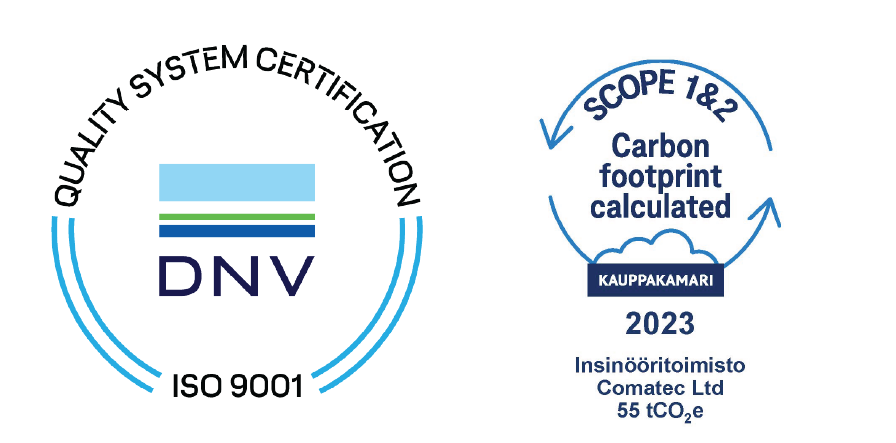
International project looks for breakthrough in fusion energy production
This article may contain outdated information.
ITER project’s test facility built in Southern France
A fusion power plant is a project, which after completion would produce clean and safe nuclear energy for the needs of all mankind. Fusion is difficult to control and maintaining it calls for more energy then what is produced. There have been attempts to solve this challenge for decades. Fusion energy production will revolutionize the world when it finally becomes successful. The research reactor ITER, currently being built in France, is one of the most ambitious energy projects in the world.
Fusion energy is a nearly perfect form of energy. Its benefits are enormous. A few litres of water and one mobile phone battery could produce fuel for one man’s needs for decades. The fuel, the heavy isotopes of hydrogen, will be easily available for hundreds of years.
The production of fusion energy does not create dangerous high-level nuclear waste like a traditional fission nuclear plant does. Such waste must be stored for centuries. While a traditional nuclear power plant could cause a catastrophic accident, as in Chernobyl or Fukushima, fusion energy does not lead to similar dangerous situations. In case something goes wrong in the fusion, the reaction simply stops. In addition, no greenhouse gases are released in fusion energy production.
The sun’s energy comes from a fusion reaction. A controlled fusion reaction would create an emission free, safe and almost endless energy source. As a matter of fact, fusion energy is expected to revolutionize the entire world some day.
Regrettably, the experiments of many decades have not succeeded in producing more energy by fusion than what is needed to keep up the reaction. Despite that, exceptional inputs are currently being made into fusion energy research facilities.
ITER – a full-size fusion reactor
ITER, the International Thermonuclear Experimental Reactor, is the world’s most ambitious energy project. The aim of the project is to realize the world’s first full-scale fusion reactor with the task of proving that fusion energy can develop into a feasible form of electricity production. This would mean a solution for the future energy needs of mankind.
According to the EU Commission, the goal is to feed fusion energy to the network by 2050. The research reactor ITER is a central phase of this plan. The ITER test facility is being built at Saint Paul-lez-Durance in the South of France. The construction has been going on since 2010. The goal is that the first plasma would ignite there in 2025. The estimated cost of this the world’s biggest product development project exceeds €15 billion. It is funded internationally.
The ITER reactor is said to be the most complex machine in the world. Its purpose is to produce ten times more energy than what is needed to heat the fusion. Just the core of the fusion reactor, the Tokamak, weighs more than three Eiffel towers. This gives a picture of the test facility’s measurements.
Comatec takes part in the concept-level work
“We have been involved in the project already since 2012 and our design work there continues”, says Comatec Group’s Sales Director Arto Timperi.
”During the spring of 2018, Comatec received altogether three orders for the fusion energy project. One of these involves the ITER project and two are to do with the DEMO project that follows the ITER. ITER is a large-scale research reactor and DEMO is a power plant that comes after the research reactor. It demonstrates the commercial electricity production from fusion energy.”
”Comatec carries out both practical engineering and concept planning. We have done modelling, strength calculation and mechanical and electromechanical machine design. For the DEMO facility stage we perform remote-controlled robotics design”, Arto tells us.
Solutions, which will come into use in the 2040s
ITER is a huge project, thousands of design engineers take part in it world-wide. Comatec’s design engineers are among them.
The research results from the ITER stage will be utilised in the designing of the DEMO power plant. The DEMO is meant to concentrate on the recovering of energy, while ITER concentrates on controlling the plasma.
The heart of the fusion reactor, the Tokamak, is a machine designed to utilise fusion energy. Inside the Tokamak, the heat generated through atom fusion is absorbed into its walls. This heat is used to produce steam and then electricity with turbines and generators, just like in traditional power plants.
The construction of the DEMO is planned to start in the 2030s and it should be operational in the 2040s. Comatec’s Senior Design Engineer Stefan Mühlig-Hofmann takes part in the DEMO stage engineering. At the moment, Stefan is involved in the divertor cassettes’ replacement trolley design project.
There are 48 divertor cassettes under the Tokamak, which are like ashtrays in a way. Impurities are steered to fall into the cassettes. During the fusion reaction, they face a heat of over 150 million degrees. The cassettes become worn out and are all replaced during the maintenance phases.
”Even though the fusion reactor is turned off during maintenance, it is one hundred degrees hot near the cassettes and there is such an amount of radiation that a maintenance person cannot go near the reactor. This means that these divertor cassettes that weigh seven tonnes are replaced by remote control, using trolleys that move along a chain-cogwheel-wheel system. I have been involved in engineering this replacement trolley”, Stefan tells us.
”The system must be fool-proof and the trolley has to come out of the tunnel without anyone going inside. In the event that the trolley gets stuck in the rail, or the chain breaks, then the reactor would be practically useless.”
”The trolley will probably later have a robot arm that works inside the reactor and makes sure that the trolley runs smoothly. There are many places in the reactor that use robot technology, because humans cannot be there to carry out maintenance.”
”The heat of the plasma during the fusion reaction is one hundred million degrees. The magnets behind the shell keep the plasma in control. The magnets work when they are cooled down to -270 degrees. Naturally, a great many cooling pipes are necessary”, says Stefan.
”Each time a divertor is replaced, the cooling pipes connected to it must be cut. In addition, the cooling pipes only last for a certain period of time, because the material becomes brittle due to the radiation.”
”The cooling pipes are cut and welded by laser. I am also involved in one work package of this team project. It has to do with the design engineering of a robotic cutting, welding and welding after-treatment device”, Stefan tells us.
”The device is operated at least 20 metres from anyone and it is inside the reactor and the pipes, where it cuts off the old pipes and welds new ones in their place. The cutting and welding heads are small remotely controlled robots. Their outer dimension is only 75 millimetres. I design a small quickly detachable coupling for the laser cutting and welding device”, says Stefan.
”This means that we take part in the engineering of parts with the size of both 7 tonnes and only 12 millimetres.”
TEXT: TAINA SYRJÄNEN



